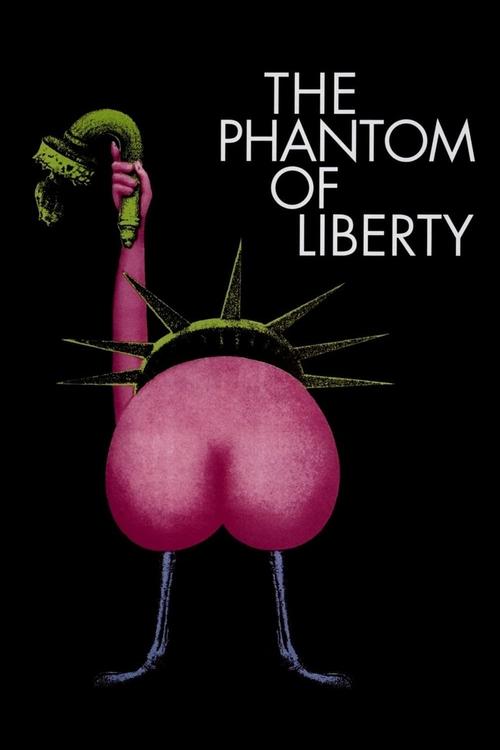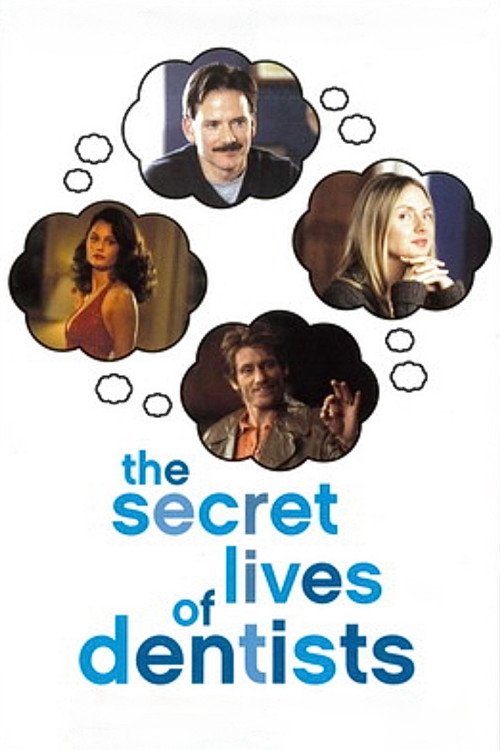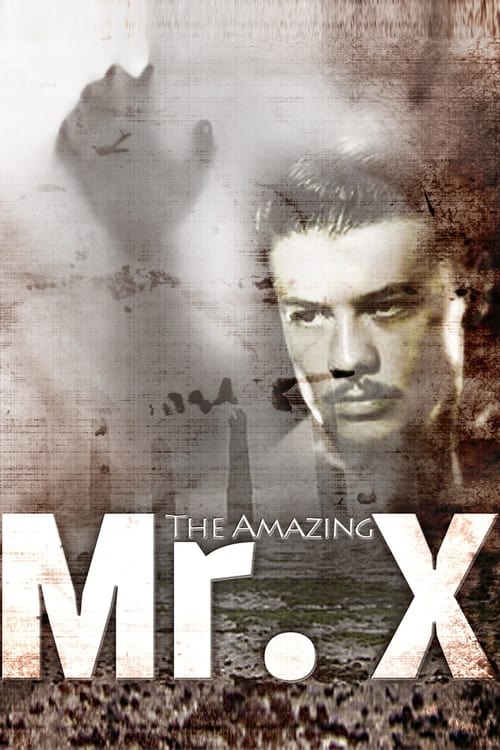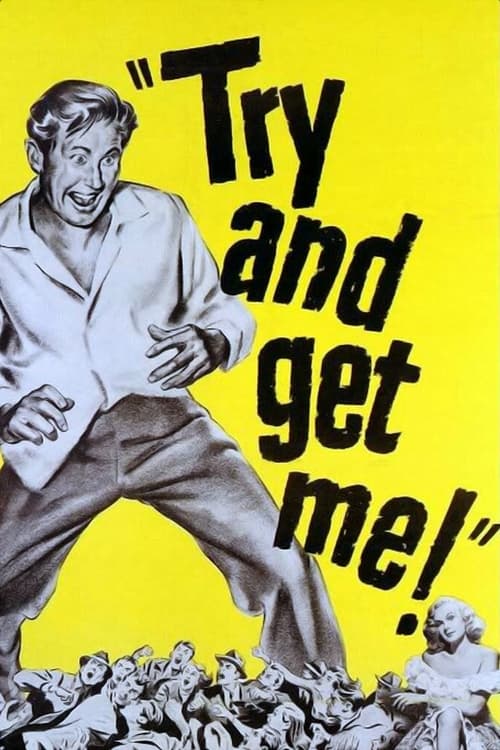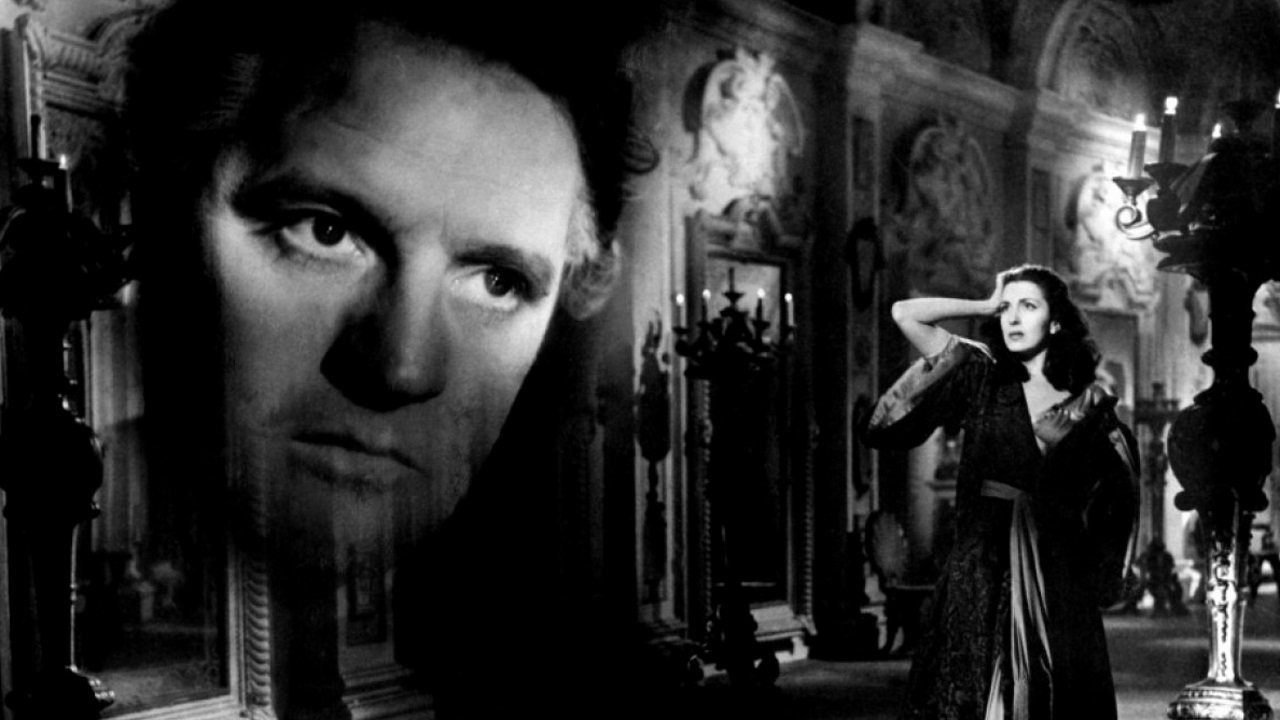
1948
Corridor of Mirrors
Drama, Romance, Mystery
6.0
User Score
19 Votes
Status
Released
Language
en
Budget
$0
Production
J. Arthur Rank Organisation, Apollo Film
Overview
A man falls in love with a beautiful young woman and begins to suspect that he may have also loved her in a previous life.
Review

John Chard
8.0
Corridor of Mirrors (1948)
Even in my sleep he would be there watching me from the corridor of mirrors.
Corridor of Mirrors is directed by Terence Young and adapted to screenplay by Rudolph Cartier and Edna Romney from the novel written by Chris Massie. It stars Eric Portman, Edana Romney, Joan Maude, Barbara Mullen, Alan Wheatley, Hugh Sinclair and Bruce Belfrage. Music is by Georges Auric and cinematography by Andre Thomas.
A woman travels from Wales to Madame Tussauds in London for a rendezvous with her lover. The rest will be told in flashback…
Laughter had a strange effect on him…
Corridor of Mirrors is a hypnotic and nightmarish experience, not in that scared to death kind of way, but in a nightmare where nothing allows you to be comfortable, keeping you in a realm of purgatory, what is real – imagined – or otherwise? The crux of the story concerns a man, Paul Mangin (Portman), who lives in the past and is obsessed with Mifanwy Conway (Romney), who not only looks like the portrait of a lady that hangs in the Mangin palace, but on Mangin’s insistence was his lover centuries in the past.
Would you care to continue the adventure?
What follows during the course of the story are subjects ranging from reincarnation, obsessive madness, fetish kinks, seduction, fantasist leanings and murder. To passionate romance, heartfelt regret and soul cleansing. The unusual story, unique maybe? Enjoys toying with audience expectations, even taking famous literary inspirations and fusing them into this Baroque world, with seasoning of the macabre for added spice. As the Mangin/Conway relationship develops, the tension becomes palpable, fear and trepidation vie for control over wistful yearnings. What will win out in the end?
What’s behind the curtain?
The look, sound and feel on offer here is quite simply magnificent. This is Gothic noir nirvana. Young and Thomas shoot the film in what I think is an average of 99% shadows and low lights, it’s the darkness in daylight effect as shards of light struggle to pierce the gloom through the Venetian blind slats. Candlelight, Scotch mist, moonbeams, canted angles and otherwise all play their atmospheric part, and then there is the backdrop and props…
The Mangin palace is vast in its opulence, complete with the titular corridor of mirrors. Behind each mirror is something that links Mangin’s obsession with the past, it is eeriness personified. Mannequins, wax work figures and dolls feature prominently, the Tussauds connection is the Chamber of Horrors, naturally. Spooky harp, spooky housekeeper (again, naturally), and Auric’s musical score is a blend of the sinister with poetic whimsy. And the crowning sequence is a Venetian costume ball, a decadent soirée that looks magnificent, but craftily it asks just what is beneath the costume façade of it all?
It’s a little too bonkers and creaky in plot development at times, but it knows this and embraces the short comings to keep with the unstable off-kilter vibe. Unfortunately it’s a difficult film to track down in good quality home format form, but if you can find a reliable source and you love Gothic noir or Baroque fantasies, then this is for you. 8/10
Read More 
John Chard
8.0
Even in my sleep he would be there watching me from the corridor of mirrors.
Corridor of Mirrors is directed by Terence Young and adapted to screenplay by Rudolph Cartier and Edna Romney from the novel written by Chris Massie. It stars Eric Portman, Edana Romney, Joan Maude, Barbara Mullen, Alan Wheatley, Hugh Sinclair and Bruce Belfrage. Music is by Georges Auric and cinematography by Andre Thomas.
A woman travels from Wales to Madame Tussauds in London for a rendezvous with her lover. The rest will be told in flashback…
Laughter had a strange effect on him…
Corridor of Mirrors is a hypnotic and nightmarish experience, not in that scared to death kind of way, but in a nightmare where nothing allows you to be comfortable, keeping you in a realm of purgatory, what is real – imagined – or otherwise? The crux of the story concerns a man, Paul Mangin (Portman), who lives in the past and is obsessed with Mifanwy Conway (Romney), who not only looks like the portrait of a lady that hangs in the Mangin palace, but on Mangin’s insistence was his lover centuries in the past.
Would you care to continue the adventure?
What follows during the course of the story are subjects ranging from reincarnation, obsessive madness, fetish kinks, seduction, fantasist leanings and murder. To passionate romance, heartfelt regret and soul cleansing. The unusual story, unique maybe? Enjoys toying with audience expectations, even taking famous literary inspirations and fusing them into this Baroque world, with seasoning of the macabre for added spice. As the Mangin/Conway relationship develops, the tension becomes palpable, fear and trepidation vie for control over wistful yearnings. What will win out in the end?
What’s behind the curtain?
The look, sound and feel on offer here is quite simply magnificent. This is Gothic noir nirvana. Young and Thomas shoot the film in what I think is an average of 99% shadows and low lights, it’s the darkness in daylight effect as shards of light struggle to pierce the gloom through the Venetian blind slats. Candlelight, Scotch mist, moonbeams, canted angles and otherwise all play their atmospheric part, and then there is the backdrop and props…
The Mangin palace is vast in its opulence, complete with the titular corridor of mirrors. Behind each mirror is something that links Mangin’s obsession with the past, it is eeriness personified. Mannequins, wax work figures and dolls feature prominently, the Tussauds connection is the Chamber of Horrors, naturally. Spooky harp, spooky housekeeper (again, naturally), and Auric’s musical score is a blend of the sinister with poetic whimsy. And the crowning sequence is a Venetian costume ball, a decadent soirée that looks magnificent, but craftily it asks just what is beneath the costume façade of it all?
It’s a little too bonkers and creaky in plot development at times, but it knows this and embraces the short comings to keep with the unstable off-kilter vibe. Unfortunately it’s a difficult film to track down in good quality home format form, but if you can find a reliable source and you love Gothic noir or Baroque fantasies, then this is for you. 8/10
Read More 